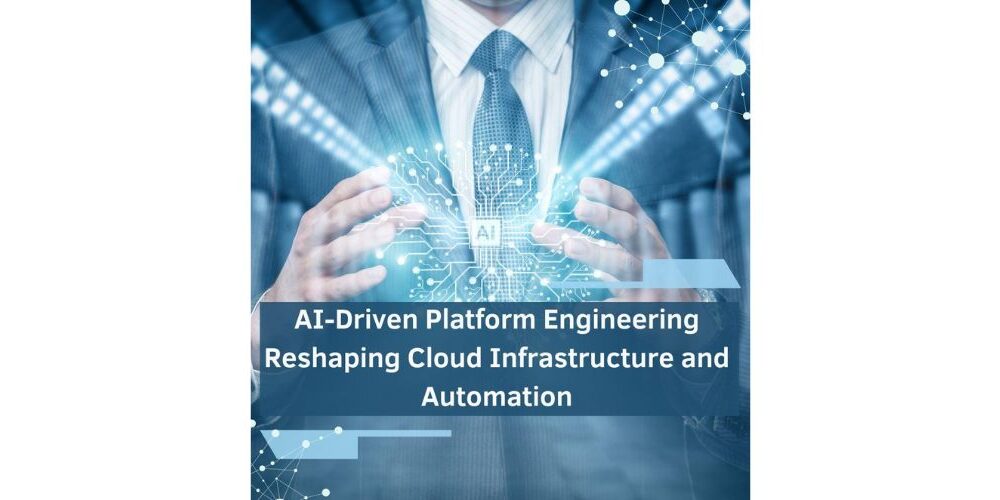AI-Driven Platform Engineering: Reshaping Cloud Infrastructure and Automation

In the rapidly evolving landscape of enterprise cloud architecture, artificial intelligence is emerging as the key enabler of innovation. Baba Prasad Pendyala, an enterprise cloud architect, explores how AI-driven platform engineering and service automation are transforming cloud infrastructure. His insights explore the technical frameworks that facilitate human-AI collaboration, reshaping how organizations implement automation and scale their operations.
AI-Powered Cloud Platforms: Beyond Traditional Infrastructure
AI integration into cloud platforms is now essential, driving predictive analytics, anomaly detection, and intelligent resource management. As enterprises migrate workloads to the cloud, AI-powered architectures replace static configurations with self-optimizing systems. This shift enhances operational efficiency, reduces incident response times, and improves resource utilization. By leveraging AI, organizations enhance automation and adaptability, fostering smarter and more resilient cloud environments. The future of cloud computing lies in AI-driven innovation, transforming infrastructure management and performance optimization.
The Expanding Role of Cloud Architects
The role of cloud architects has expanded beyond infrastructure management to encompass AI governance, machine learning operations, and neural network architecture. As AI integration becomes essential, industry trends highlight the need for expertise in these areas. Cloud architects are now strategic enablers, aligning business goals with technological advancements. Their evolving responsibilities demand a deep understanding of AI-driven solutions to ensure seamless implementation and optimization. This transformation underscores their critical role in bridging innovation with enterprise objectives, making them key players in shaping the future of cloud computing.
Service Automation: The AI Advantage
Traditional automation systems use static decision trees, limiting their flexibility in dynamic environments. In contrast, AI-driven service automation utilizes machine learning to enable continuous improvement. Businesses that adopt AI-powered automation experience increased productivity, faster issue resolution, and reduced downtime.” AI also enhances predictive maintenance, allowing enterprises to identify and address potential disruptions before they become critical failures. This proactive approach minimizes operational risks and optimizes workflows, establishing AI as a game-changer in service automation and enterprise efficiency.
AI in Platform Engineering: Key Technologies and Frameworks
AI’s role in platform engineering extends beyond automation to include advanced decision-making capabilities. Organizations are increasingly adopting technologies such as Kubernetes for AI workload orchestration, GitOps for infrastructure management, and TensorFlow for machine learning pipelines. These frameworks enable seamless AI integration, allowing platforms to adapt dynamically to changing workloads and business requirements.
Human-AI Collaboration: Achieving Synergy in Decision-Making
The success of AI-driven cloud platforms hinges on effective human-AI collaboration. Structured decision-making models help define responsibilities, ensuring AI enhances rather than replaces human expertise. AI excels at pattern recognition and data analysis, while human judgment remains essential for interpreting complex scenarios and making strategic decisions. Organizations that implement clear responsibility matrices between AI systems and human architects report greater operational efficiency and higher stakeholder satisfaction.
Governance and Ethical AI Implementation
As AI adoption accelerates, robust governance frameworks are essential for responsible deployment. Organizations are integrating AI governance mechanisms to address ethical concerns, mitigate bias, and ensure regulatory compliance. Automated validation tools, fairness monitoring, and explainable AI techniques are becoming standard, enhancing transparency and accountability. These governance structures help organizations navigate AI complexities while maintaining trust and reliability, ensuring AI systems operate ethically and comply with societal and legal expectations.
The Road Ahead: Scaling AI in Enterprise Cloud
The future of enterprise cloud architecture is poised for further disruption with advancements in AI-driven technologies. Emerging trends such as edge computing and federated learning are shaping the next phase of AI integration, allowing for decentralized intelligence and improved data privacy. Organizations that take a systematic approach to AI readiness—incorporating robust technical frameworks and governance models—will be well-positioned to drive innovation and scalability in their cloud environments.
In conclusion, the convergence of AI, platform engineering, and service automation is fundamentally reshaping enterprise cloud architecture. By leveraging AI-driven frameworks, organizations can achieve unprecedented levels of efficiency, security, and agility. As cloud architects incorporate AI into platform engineering, the synergy between human expertise and intelligent automation will be essential for long-term success. Baba Prasad Pendyala‘s insights emphasize the strategic importance of this transformation, urging enterprises to align AI initiatives with their broader cloud infrastructure goals to stay competitive in an evolving digital landscape.

Source: AI-Driven Platform Engineering: Reshaping Cloud Infrastructure and Automation




